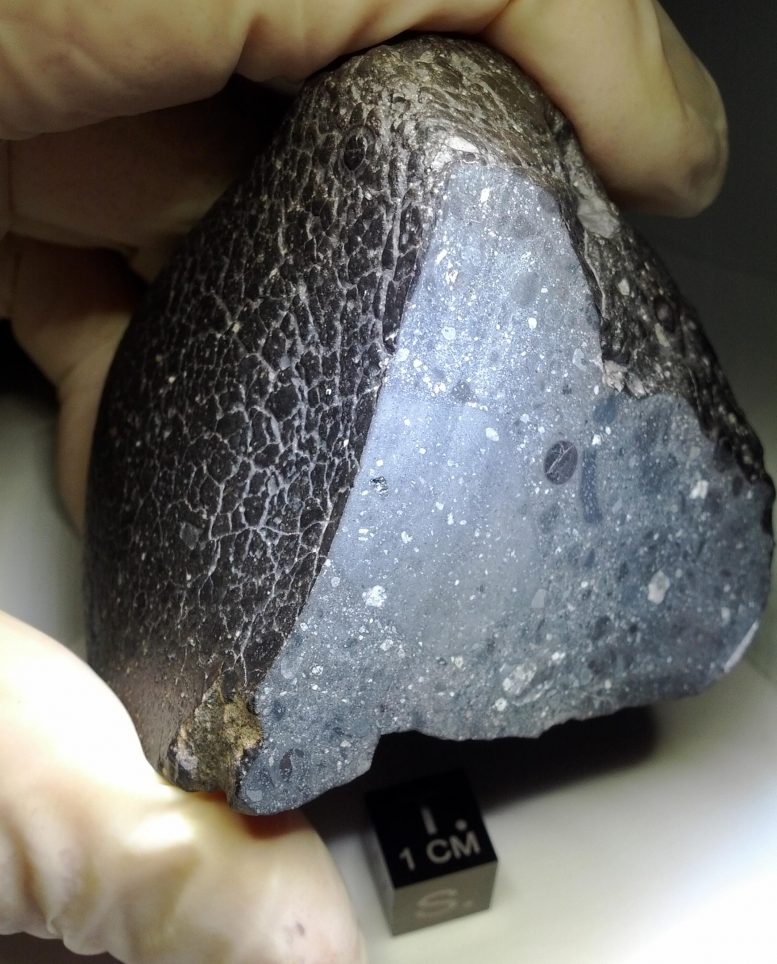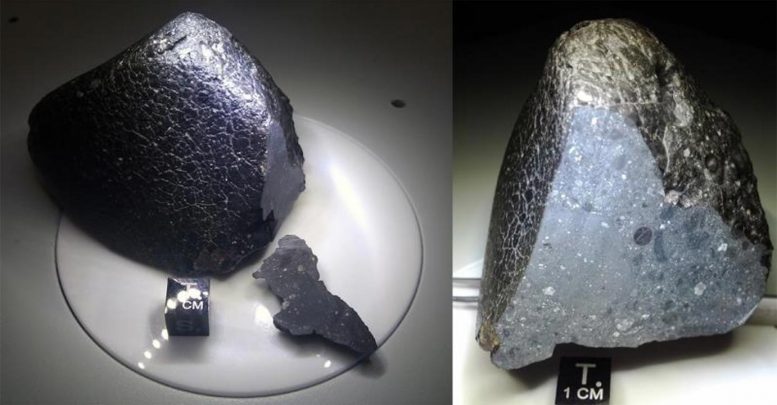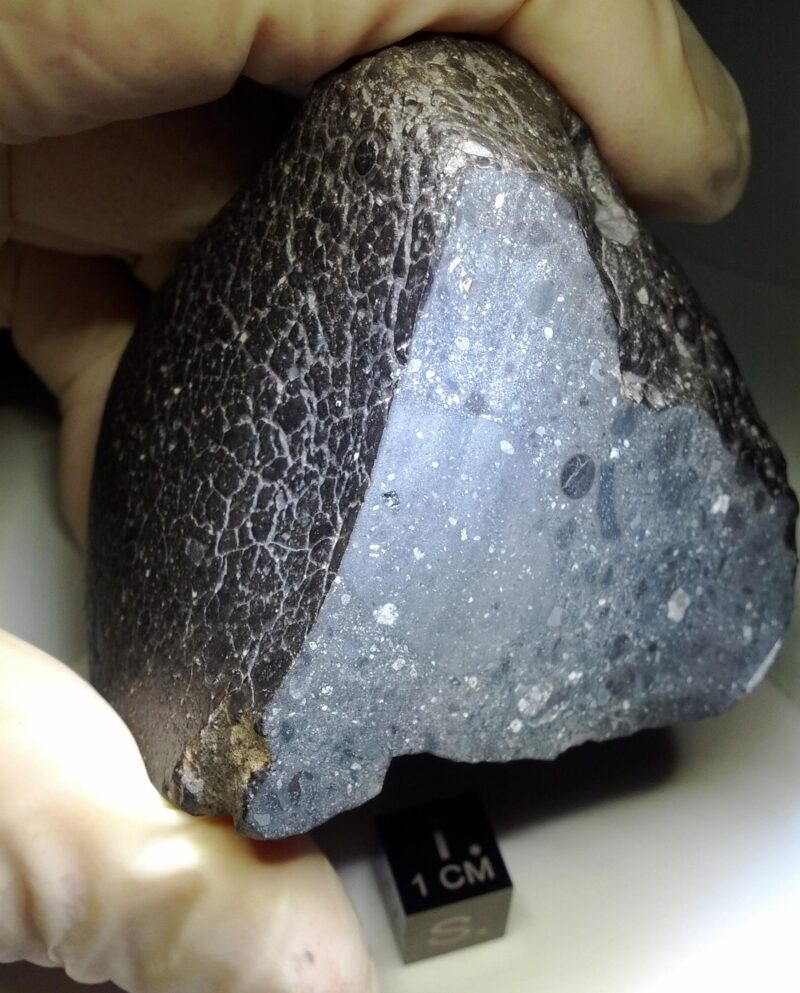
Désignée sous le nom de Northwest Africa (NWA) 7034, et surnommée “Black Beauty”, cette météorite martienne pèse environ 320 grammes. Crédit : NASA
Les chercheurs de l’Université Curtin qui étudient une météorite martienne ont trouvé la première preuve de dommages de haute intensité causés par l’impact d’un astéroïde, dans des résultats qui ont des implications pour comprendre quand les conditions propices à la vie ont pu exister sur les premiers Mars.
Published in leading journal Science Advances, the research examined grains of the mineral zircon in Martian meteorite NWA 7034. The meteorite, colloquially known as ‘Black Beauty’, is a rare sample of the surface of Mars. The original 320-gram rock was found in northern Africa and first reported in 2013.
Lead author Morgan Cox, a PhD candidate from Curtin’s Space Science and Technology Centre (SSTC) in the School of Earth and Planetary Sciences, described the meteorite as a collection of broken rock fragments and minerals, mostly basalt, that solidified and became a rock over time. A zircon found inside the meteorite preserves evidence of damage that only occurs during large meteorite impacts.

NWA 7034 showing fusion crusted exterior (left) and sawcut revealing interior (right), both images with a 1 cm cube for scale. Credit: Institute of Meteoritics, UNM
“This grain is truly a one-off gift from the Red Planet. High-pressure shock deformation has not previously been found in any minerals from Black Beauty. This discovery of shock damage in a 4.45 billion-year-old Martian zircon provides new evidence of dynamic processes that affected the surface of early Mars,” Ms. Cox said.
“The type of shock damage in the Martian zircon involves ‘twinning’, and has been reported from all of the biggest impact sites on Earth, including the one in Mexico that killed off the dinosaurs, as well as the Moon, but not previously from Mars.”
Co-author Dr. Aaron Cavosie, also from Curtin’s SSTC, said the occurrence of zircon grains in the Black Beauty meteorite provided physical evidence of large impacts on early Mars, and had implications for the habitability of the young planet.
“Prior studies of zircon in Martian meteorites proposed that conditions suitable for life may have existed by 4.2 billion years ago based on the absence of definitive shock damage,” Dr. Cavosie said.
“Mars remained subject to impact bombardment after this time, on the scale known to cause mass extinctions on Earth. The zircon we describe provides evidence of such impacts, and highlights the possibility that the habitability window may have occurred later than previously thought, perhaps coinciding with evidence for liquid water on Mars by 3.9 to 3.7 billion years ago.”
Reference: “Impact and habitability scenarios for early Mars revisited based on a 4.45-Ga shocked zircon in regolith breccia” by Morgan A. Cox, Aaron J. Cavosie, Kenneth J. Orr, Luke Daly, Laure Martin, Anthony Lagain, Gretchen K. Benedix and Phil A. Bland, 2 February 2022, Science Advances.
DOI: 10.1126/sciadv.abl7497
The research team also included collaborators from The University of Western Australia and the University of Glasgow.



